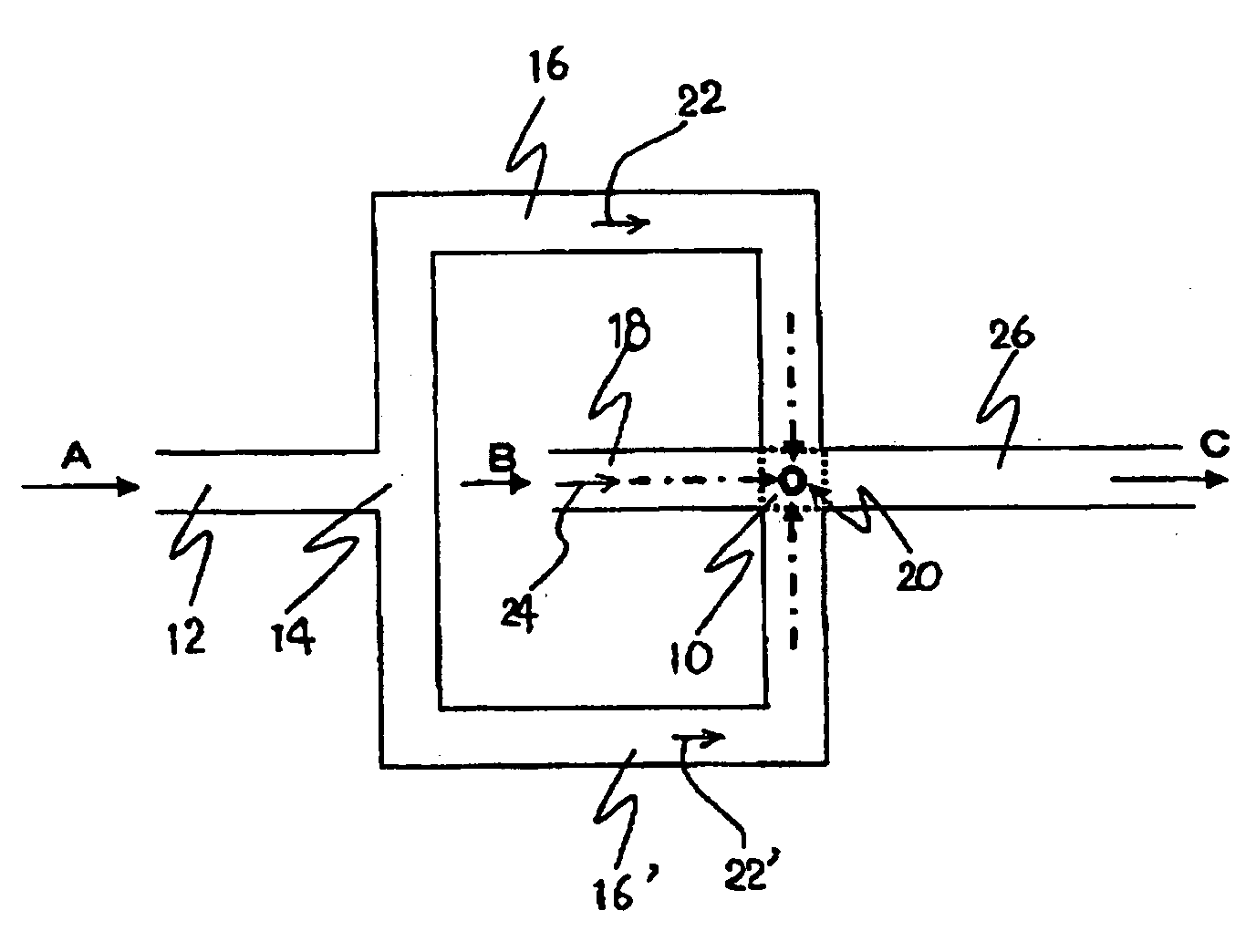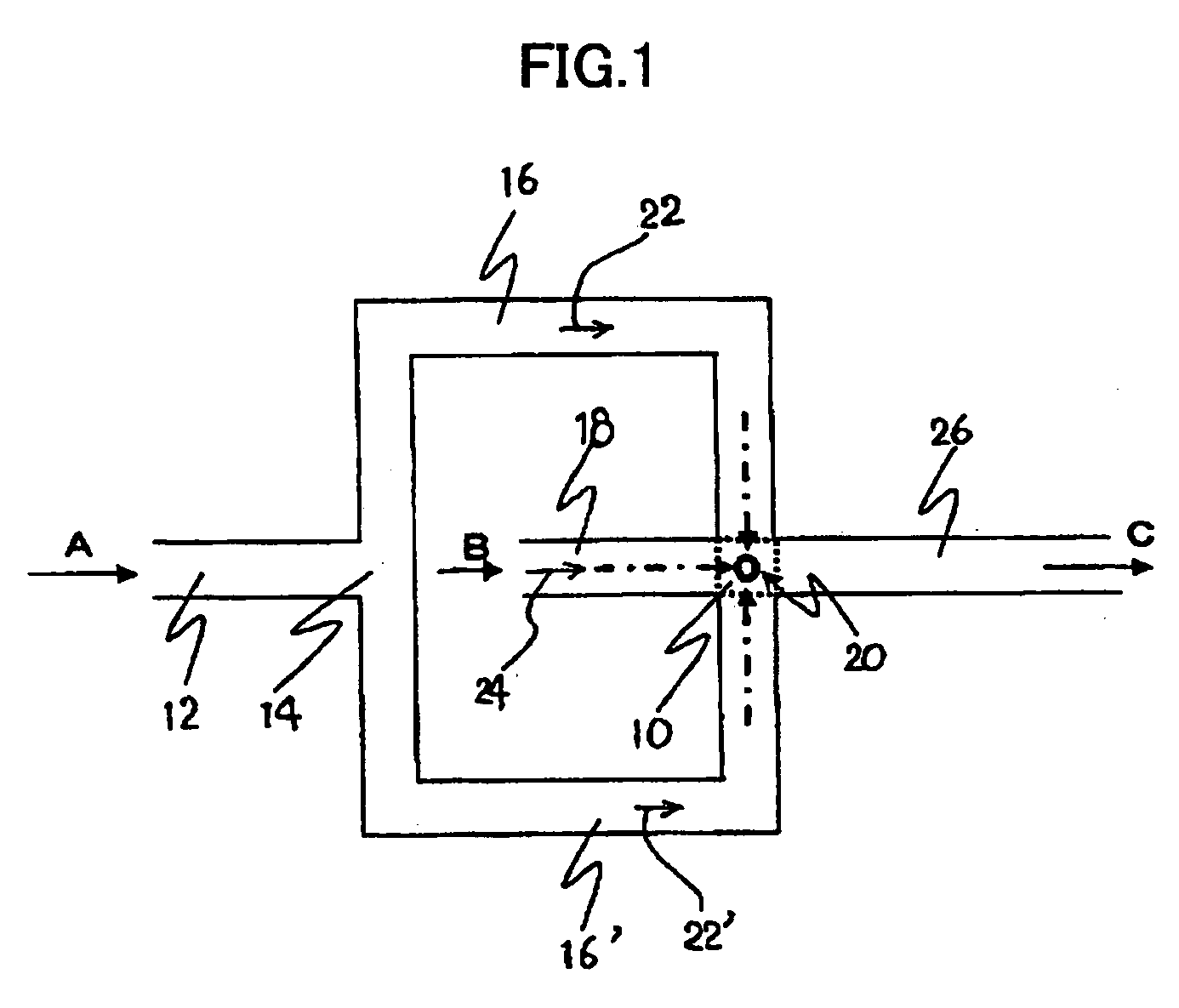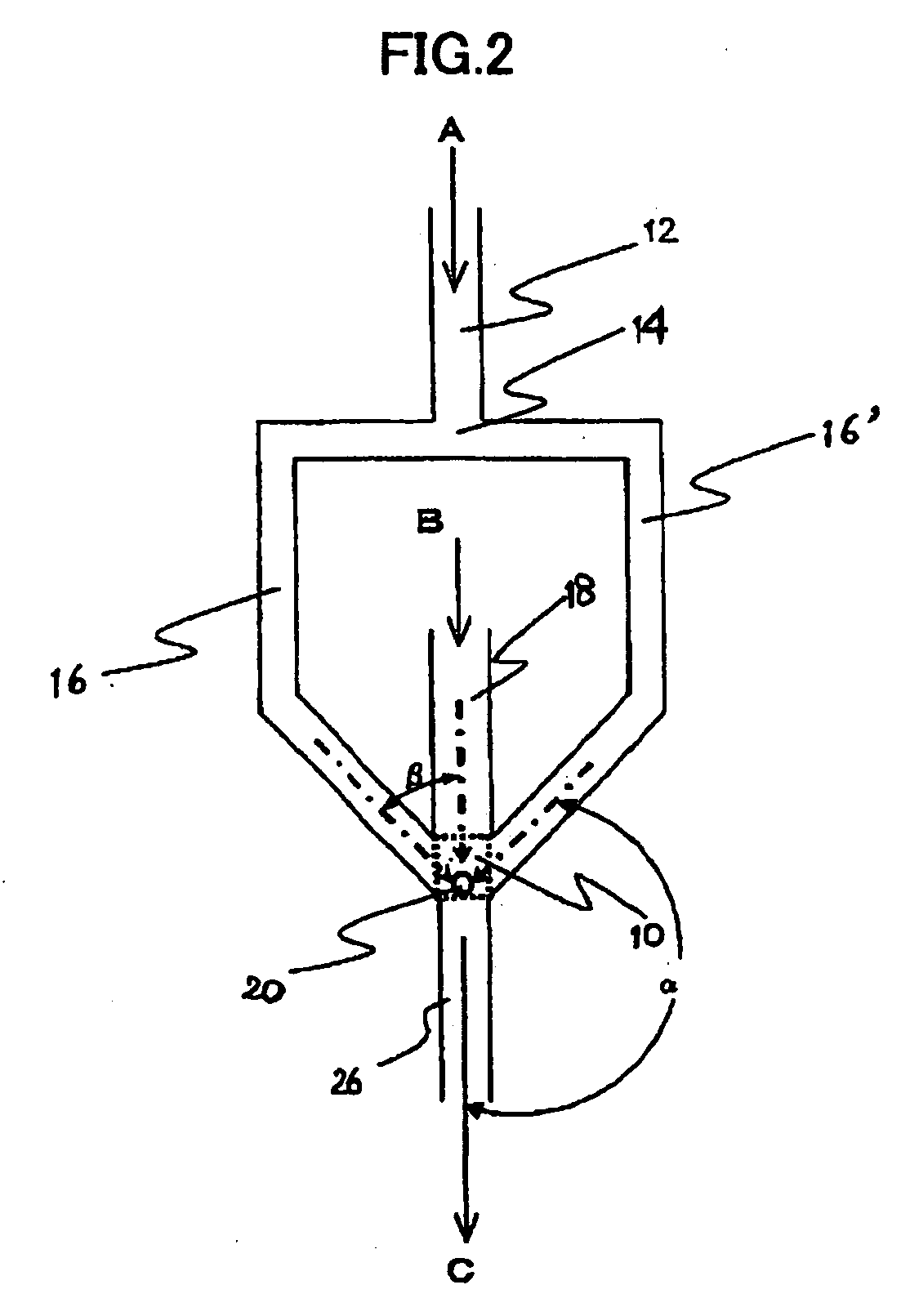Microdevice and method for joining fluids
- Summary
- Abstract
- Description
- Claims
- Application Information
AI Technical Summary
Benefits of technology
Problems solved by technology
Method used
Image
Examples
Embodiment Construction
[0073]The microdevice of the present invention has a function of supplying two or more kinds of fluids flowed into itself independently toward a joining region respectively, and a function of discharging those fluids from the joining region. The term “independently” means that each fluid flowing into the microdevice pass through different passages until the fluid arrives at a joining region, and different kinds of fluids do not flow through the same passage, i.e., meaning “supplied separately”.
[0074]In the microdevice of the present invention, two kinds or more fluids are supplied via an entrance port into the microdevice, and they are supplied toward the joining region through the supply channel. The supply channel is not particularly specified so long as it is a passage that supplies the fluid supplied into the microdevice toward the joining region, and usually, it is a capillary tube member having a circular or a rectangular cross-section. A fluid that flows through such a supply...
PUM
 Login to View More
Login to View More Abstract
Description
Claims
Application Information
 Login to View More
Login to View More - R&D
- Intellectual Property
- Life Sciences
- Materials
- Tech Scout
- Unparalleled Data Quality
- Higher Quality Content
- 60% Fewer Hallucinations
Browse by: Latest US Patents, China's latest patents, Technical Efficacy Thesaurus, Application Domain, Technology Topic, Popular Technical Reports.
© 2025 PatSnap. All rights reserved.Legal|Privacy policy|Modern Slavery Act Transparency Statement|Sitemap|About US| Contact US: help@patsnap.com



